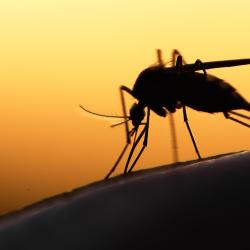Blind Cave Fish May Provide Insight on Eye Disease and Other Human Health Issues
New genetic analysis of the tiny fish could aid research on retinal disease, metabolic disturbance and sleep disorders
Blind cave fish may not be the first thing that comes to mind when it comes to understanding human sight, but recent research indicates they may have quite a bit to teach us about the causes of many human ailments, including those that result in loss of sight.
A research team, which was led by the University of Minnesota and included researchers from the University of Maryland, is looking to the tiny eyeless fish for clues about the underpinnings of degenerative eye disease and more.
A new study, published in the Oct. 20, 2014 online edition of Nature Communications, opens the doors to research that could illuminate the mechanisms behind human disease.
Cave fish exhibit repeated, independent evolution for a variety of traits including eye degeneration, pigment loss, increased size, number of taste buds and shifts in behavior. The researchers are investigating how organisms adapt to cave environments and which genes are involved in a range of traits.
“The cavefish genome sequence is similar to the human genome sequence, and we share many of the same pathways and genes with them. They’re an ideal subject for study, because they have traits that are directly translatable to human health,” says the study’s lead author Suzanne McGaugh, an assistant professor in the University of Minnesota’s Department of Ecology, Evolution and Behavior at the College of Biological Sciences.
Researchers from 10 institutions around the world, including University of Maryland Biology Professor William Jeffery and Postdoctoral Fellow Li Ma, detail the first-ever de novo genome assembly for a species of blind cave fish (Astyanax mexicanus) commonly known as the Mexican tetra fish. The work is notable because the Astyanax genome will allow dissection of the genetic bases of traits that make the cave fish distinctive and facilitate future studies investigating the paths of repeated evolution, which may help advance understanding of human disease.
The researchers identified repeat elements in the genome of the cavefish and compared those to similar species and reported the results of tests of specific genes for potential functional and expression differences. They were able to generate a list of candidate genes for hallmark cave fish traits.
“Cave fish replicate some of the same traits characteristic of human eye diseases, such as malfunction of the lens, retina and sclera,” said Jeffery. “Sequencing the Astyanax genome has given us the opportunity to find the entire repertoire of genes involved in visual degeneration.”
Jeffery says researchers will also be able to pinpoint genomic differences from surface fish that may be causing additional traits in cave fish related to human health, such as albinism (the complete loss of black pigmentation in the skin) and obesity.
McGaugh notes that the research may also form the basis for a model for sleep disturbance studies because cave fish sleep about a quarter as much as surface fish do. She plans to continue research that builds on the current work.
“There are three to five different events in Mexico of the same species going into caves and evolving these traits, so we’re hoping to see if it replays the same way, and discover if there is anything consistent about the genes and where genetic changes occur,” says McGaugh, who is also a member of the college’s Genome Variation research cluster, which focuses on the deploying the latest tools in genomics, molecular genetics, biochemistry, and/or bioinformatics to study fundamental biological questions.
The research paper, "The cavefish genome reveals candidate genes for eye loss," Suzanne E. McGaugh, et al., was published in Nature Communications on Oct. 20, 2014.
Media Relations Contacts: (University of Minnesota) Stephanie Xenos, 612-624-8723, sxenos@umn.edu; (University of Maryland) Abby Robinson, 301-405-5845, abbyr@umd.edu
Writer: Julie Kendrick
University of Maryland
College of Computer, Mathematical, and Natural Sciences
2300 Symons Hall, College Park, Md. 20742
www.cmns.umd.edu
@UMDscience
About the College of Computer, Mathematical, and Natural Sciences
The College of Computer, Mathematical, and Natural Sciences at the University of Maryland educates more than 7,000 future scientific leaders in its undergraduate and graduate programs each year. The college's 10 departments and more than a dozen interdisciplinary research centers foster scientific discovery with annual sponsored research funding exceeding $150 million.







